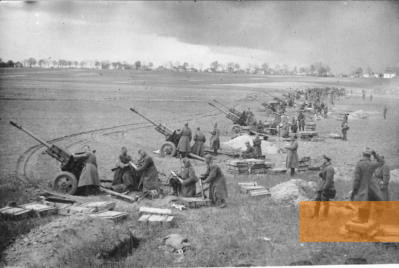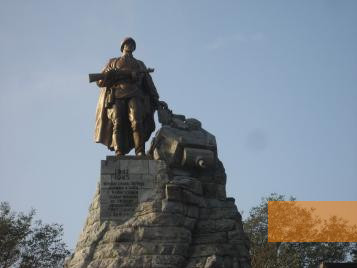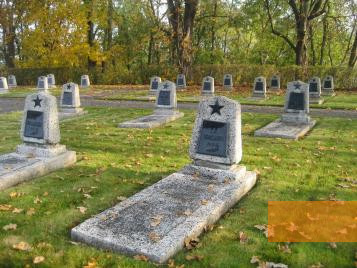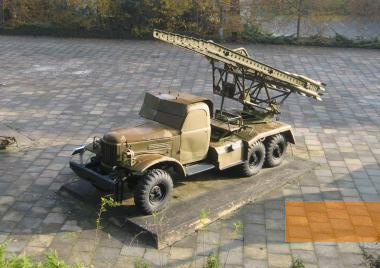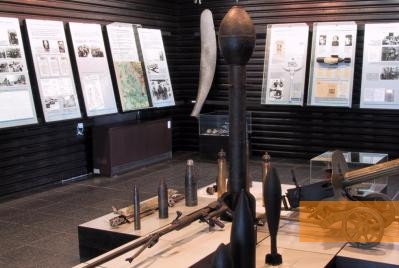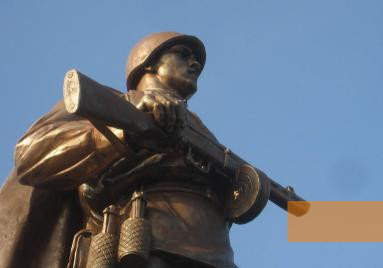The Battle of the Seelow Heights, which took place in the spring of 1945, was the largest battle on German territory in the course of the Second World War. Tens of thousands of Soviet, Polish and German soldiers lost their lives. Today, a monument which was erected shortly after the war as well as a memorial located on the historic site commemorate the battle and its many victims.
At the beginning of 1945, Soviet and American troops were competing over the conquest of Berlin. When the fort at Küstrin had been taken and the bridge heads on the Oder river had been stabilised at the end of March, the Red Army seemed to be at a strategic advantage. The first defensive line of the 1st Belorussian Front under the command of Georgy Zhukov was to lead the troops to Germany's capital along Reichsstraße 1. The largest natural obstacle on the way were the Seelow Heights on the western edge of the Oderbruch about 70 kilometres east of Berlin. Here, the 9th Army of the Wehrmacht, composed of various units thrown together, set up its defensive line. 200,000 men on the defending side were faced with 900,000 men on the attacking side.
The assault of the Soviet troops, assisted by the 1st Polish Army, was launched in the early hours of April 16, accompanied by one of the heaviest artillery barrages of World War II. 120 anti-aircraft searchlights were to blind the Germans during the attack of the infantry, yet using them turned against the Red Army who ended up suffering great losses. The tank units Zhukov quickly summoned caused further chaos. Instead of a fast breakthrough, it took four days before the German positions could be broken and the road to Berlin opened up.
The assault of the Soviet troops, assisted by the 1st Polish Army, was launched in the early hours of April 16, accompanied by one of the heaviest artillery barrages of World War II. 120 anti-aircraft searchlights were to blind the Germans during the attack of the infantry, yet using them turned against the Red Army who ended up suffering great losses. The tank units Zhukov quickly summoned caused further chaos. Instead of a fast breakthrough, it took four days before the German positions could be broken and the road to Berlin opened up.
Over 100,000 soldiers died during the battles for the bridge heads and the »Battle of the Seelow Heights«. Between April 16 and 20, 1945, in the course of the battle of the Seelow Heights, over 35,000 Soviet soldiers fell, the death toll on the German side was 12,000. After the war, hundreds of civilians died in the area as a consequence of the battle: of malnourishment, diseases and blind shells.
Already a few days after Berlin had been conquered, Marshal Zhukov commissioned sculptor Lev Kerbel with erecting a series of monuments along the invasion route of the Red Army, next to the graves of the fallen soldiers. The resulting bronze sculpture towers over the graves of 200 Soviet soldiers. It depicts a young soldier of the Red Army who meditatively looks on beyond the graves of his comrades towards the homeland. In 1972, the »Memorial to the Liberation of the Seelow Heights« was inaugurated. During GDR times, the exhibition described the battle from the Soviet perspective only. After German reunification, the exhibition concept was redesigned. In 1995, a new exhibition – which also addresses the fates of German and Polish soldiers as well as the many civilian victims – was opened.
Military equipment is displayed on the premises of the memorial site: tanks, rocket launchers, artillery pieces as well as one of the anti-aircraft searchlights used during the battle. The memorial is administered by the Kultur GmbH Märkisch-Oderland.
Military equipment is displayed on the premises of the memorial site: tanks, rocket launchers, artillery pieces as well as one of the anti-aircraft searchlights used during the battle. The memorial is administered by the Kultur GmbH Märkisch-Oderland.
- Name
- Gedenkstätte Seelower Höhen
- Address
-
Küstriner Straße 28 a
15306 Seelow - Phone
- +49 (0)3346 597
- Fax
- +49 (0)3346 598
- Web
- http://www.gedenkstaette-seelower-hoehen.de
- gedenkstaette@kulturmol.de
- Open
- Tuesday to Sunday and on holidays 10 a.m. to 4 p.m.
- Possibilities
- Guided tours and workshops for school groups, training, lectures, documentary and slide show, museum shop


